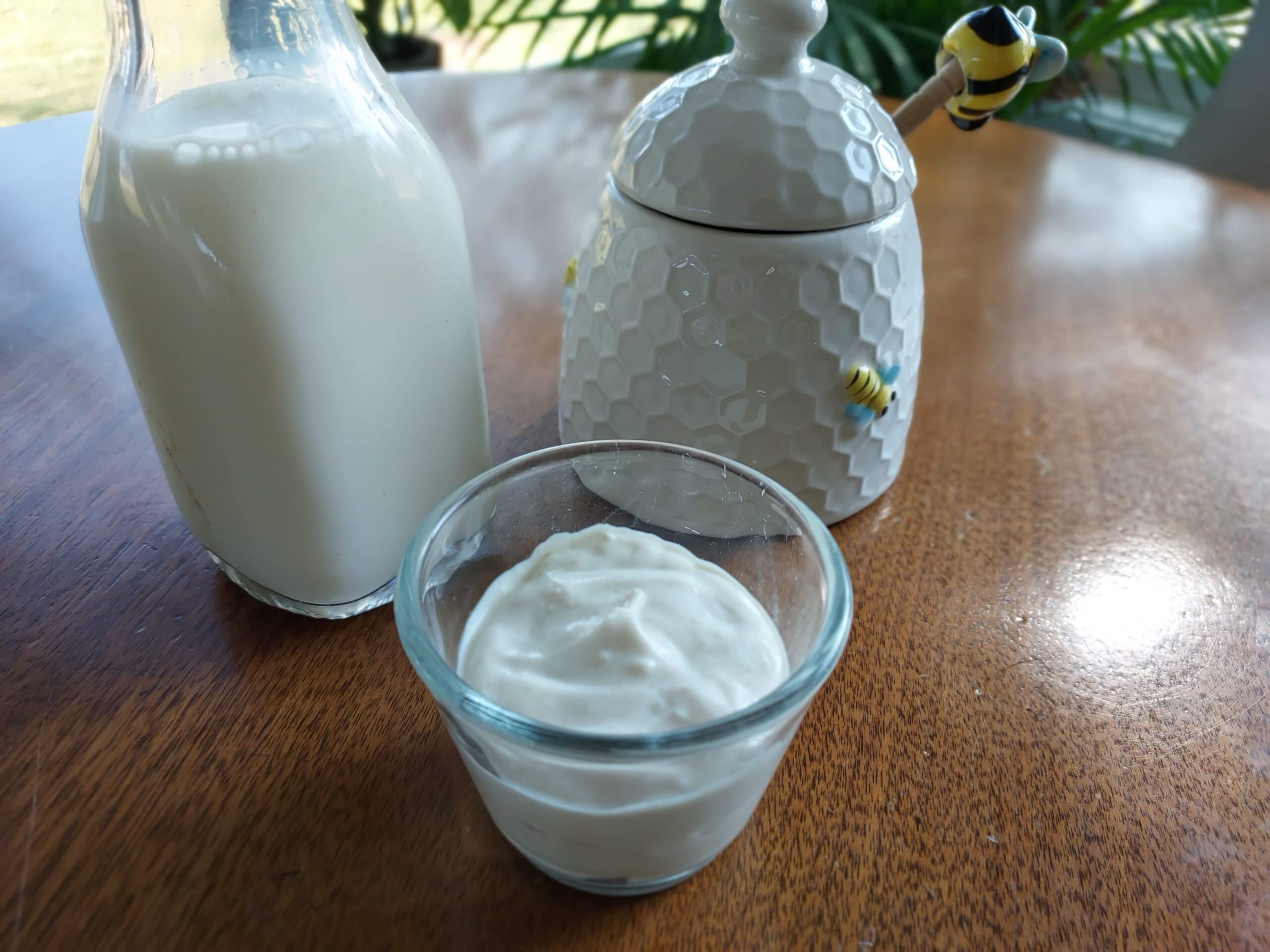Once you realize how easy and delicious homemade yogurt is, you’ll never go back to store bought again!
This recipe uses premade yogurt as the starter. For future batches, reserve some of the yogurt to be used as a starter. When selecting your first starter yogurt, pay attention to the strains of bacteria used. The more, the merrier. I’ve found some name brand yogurts to contain only a couple of strains versus some off brands that have as many as nine!
You have total control over the thickness, tanginess and flavor. Leave it as is, strain it for a Greek-style yogurt or add flavorings. One of our favorites is a drizzle of honey and cut up fruit or frozen blueberries, or maple syrup and a sprinkle of cinnamon. We use this in place of sour cream or as a base to various sauces and dips. Its important to note that any flavorings should be added after the yogurt has been cultured.
The leftover whey even has its own benefits. Whey is jam-packed with nutrients and proteins you don’t want to pour down the drain. Add it to smoothies, use it to marinate meat, freeze it for later or even fertilize plants with it. I have a friend who feeds her leftover whey to her chickens!

Yogurt
Equipment
- 1 Large Pot
- 1 Digital thermometer
Ingredients
- 8 cups whole milk
- 8 tbsp plain yogurt
Instructions
- Heat milk in a large pot over medium heat, stirring occasionally.
- Set aside yogurt starter, allowing it to warm up to room temperature. I add mine to the bowl I plan on culturing the yogurt in.
- Heat milk until it registers 180 degrees F. This usually takes 10-15 minutes. Remove from heat.
- Allow milk to cool until it reads between 105-112 degrees F. This can take 30 minutes or so, depending on how hot/cold the kitchen is.
- Strain the cooled milk through a fine mesh strainer into the bowl with the room temperature yogurt starter. Whisk gently until thoroughly combined. Cover it tightly. Set aside to ferment, undisturbed for anywhere from 10-24 hours. The warmer the room, the faster it ferments.
- Test for doneness. A layer of whey around the yogurt is normal. Yogurt will be runnier than store bought but should still look 'set'. Test for tanginess. The longer it sets, the tangier it will be.
- If a thicker, Greek style yogurt is your preference, place a few layers of cheesecloth over a bowl (secure with clothespins or rubber bands) and pour/scoop the yogurt into the cheesecloth. Allow it to strain for an hour or so, in the fridge, then scoop the strained yogurt out of the cheesecloth into a separate container.
- Yogurt should last in the fridge for up to two weeks.


